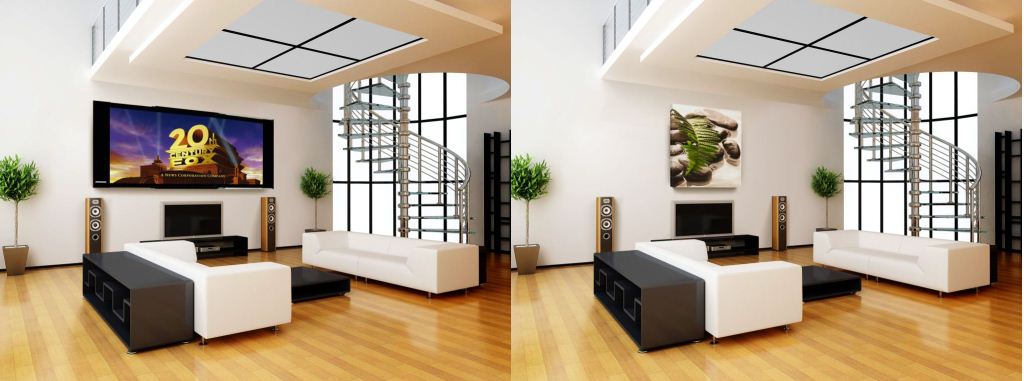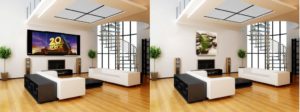News

A screen for what?
A screen for what? Why not project directly on the wall? Cinema was invented in France in the early twentieth century, and we had to quickly find a support to project the image: the white sheet just hanging on a wall was the first screen used. Then the cinema became an art and the screen […]
A screen for what?
Why not project directly on the wall?
Cinema was invented in France in the early twentieth century, and we had to quickly find a support to project the image: the white sheet just hanging on a wall was the first screen used. Then the cinema became an art and the screen improved by becoming a tense surface. Then the cinema became talkative and it was necessary to place the speaker behind the screen so that the sound coincides with the image: the screen was purposely pierced with thousands of small pinholes, the screen transcon is born.
To give more and more emotion to the audience, the project format has evolved from the 1: 1 image (for example 1M high to 1m wide) to 1.33 and 1.77 through various formats cinemascope (2.70 / 2.55 / 2.40 / 2.35). The screen has adapted to all its evolutions while dividing into 2 technical categories: the fixed screens stretched on frame, and the scrolling screens…

The first private movie theaters emerged in the 1950s to luxurious homes of Hollywood stars, recreating mini-theaters cinemas in rooms dedicated to their homes. In the 70s and 80s, the ultimate luxury became so to have its private cinema room with a fixed screen and cinema chairs. Fans and schools chose them for scroll screens. In the 2000s, some thought that the cinema was limited to the use of a projector: the need to project at home and the impossibility of having a dedicated room available led to the vogue of the projection on white wall , even painting it with a mural called “special”. Soon, moviegoers realized that the projector gave better results with a real screen, the walls are never completely straight or uniform, just like a good stereo amp does not give good results without good sound speakers.
Today the home theater is divided into 2 distinct markets: the home cinema by high definition television and its desktop versions (PCs, tablets, smartphones) or the digital video projector associated with a screen. Little by little, users are rediscovering the quality of a good high-definition projector combined with a real cinematic canvas, provided it is tense and of a good surface quality.
In conclusion, if you do not have enough space, opt for a television. If you have more room, you can opt for a higher quality that will allow you to dive into a real big screen. The projection will also no longer have the harmful blue rays of TVs.
The use of home theater has long been limited to projecting films. Today, the new video projectors allow in addition to project TV (via boxes), game consoles, or sports broadcasts on a very large screen. Rooms dedicated to the sole use of films are less and less used, spectators prefer to enjoy the show directly in their living room. That’s why it needed a new generation of extended screens that also allow for perfect integration into everyone’s living room. At the beginning of the new century, a new generation of screens has emerged: DesignScreen display screens. An invention made in France, like the invention of cinema …








